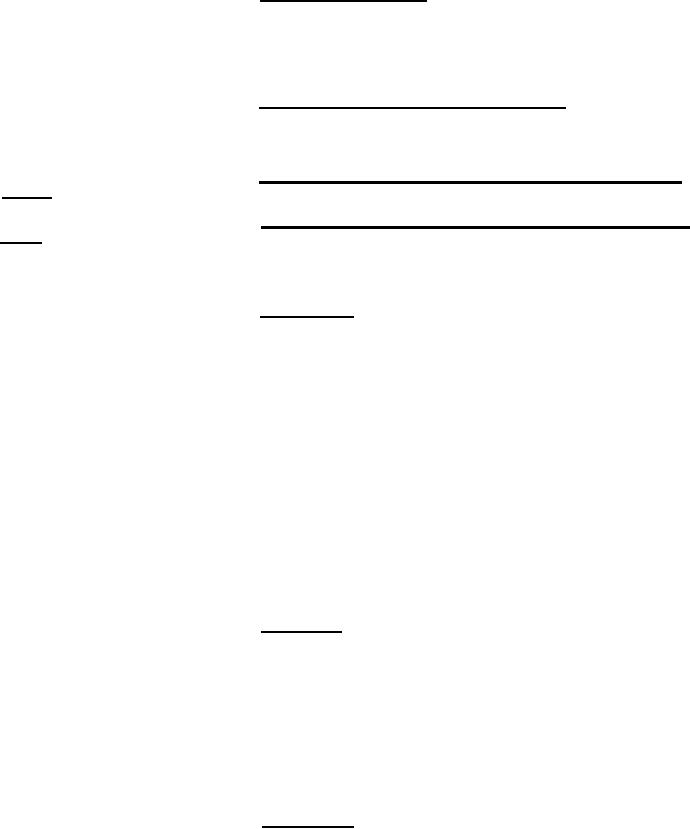 |
|||
|
Page Title:
Ordnance Output Logic to Armament/Ordnance Input Logic |
|
||
| ||||||||||
|
|  MIL-D-81347C(AS)
S i g n a l Characteristics- Unless otherwise noted, signal levels
3.5.2.4.3.4.2
external to Logic Unit 2 are defined as follows:
Logical "0" = +4 1 volts
Logical "1" = 0.0 +0. 5-0.0 volts
Armament/Ordnance Input Logic to Computer - Communications
3.5.2.4.3.4.3
between the AOIL and the computer shall be in accordance with Appendix 1. The AOIL shall provide
control line drivers for Interrupt and Input Data Request and data line drivers for bits 0 through 9
and 12 through 14.
Armament /Ordnance Input Logic to Maintenance Control Panel
3.5.2.4.3.4.4
Subunit - The AOIL shall provide to the MCPL the input control and dat a lines for monitoring.
Maintenance Control Panel Subunit to Armament/Ordnance Input
3.5.2.4.3.4.5
Logic - The MCPL shall provide the input amplifiers for the Input Acknowledge and External Inter-
rupt Enable for the AOIL. Data only shall be available to the AOIL.
Ordnance Output Logic to Armament/Ordnance Input Logic
3.5.2.4.3.4.6
Error Signals - As indicated previously, the OOL and AOL
3.5.2.4.3.4.6.1
shall have error detection circuitry. Each Output Logic shall have the ability to detect three different
types of errors. The interpretation of the error types will be found in 3.5.2 .4.4.4.5.1 and
3.5.2.4.5.4.5.1. For the present, errors will be referred to only by error type numbers.
Three error signals and an inhibit signal shall be transferred
from the OOL to the AOIL. The inhibit signal shall be a logical "1" (inhibited) during the time when
the External Function Request is a logical "0". The External Function Request shall be a logical "O"
for a time period between one microsecond and one millisecond if the computer output command was
an Interrogate command, and 130 10% milliseconds for any other computer command (see
3.5.2.4.5. 3). The AOIL shall not enter any error information to the computer during the time that
the inhibit is a logical "l"; therefore, any error signal occurring during this time must be stored until
the inhibit becomes a logical "O".
The Type I error signal shall be a logical "l" for 2.2 micro-
seconds (min. ). The trailing edge of this pulse shall occur during the time that the inhibit signal is a
logical "1". The Type II error signal shall be a logical "1" for an indefinite length of time.
The Type III error signal shall be a logical "1" (low) for a maximum of 260 10% milliseconds,
and shall occur during the time that the inhibit signal is a logical "1". Following an SLT Status
command, the Type III error signal may be a logical "1" for an indefinite period of time.
Interrogates - The computer shall be able to request that the
3.5.2.4.3.4.6.2
AOIL enter one or more (up to five) status words. This interrogation is used primarily for initializa-
tion and system's recovery (temporary loss of power). Four of these words (Wing Status, Bomb Bay
Status, Pressurized Sono/SUS Status and Manual Switch/Door Satus) shall also be entered upon
change of status.
The computer shall request the interrogation of these five words
by transmitting an Interrogate command (3. 5. 2.4.5.4.1 and Figure 84) to the OOL. The OOL
shall decode the computer command and transmit interrogate signals (a logical "1" for O. 5 micro-
seconds min. ) to the AOIL. Since the computer can simultaneously request any combination of the
five status words, the AOIL shall store the interrogate commands until each individual word has
been entered.
Error Signals - As with the OOL, the AOL shall also transmit
3.5.2.4.3.4.7.1
three error signals and an inhibit signal (for these three errors) to the AOIL. In this case the inhibit
signal shall be a logical "1" (inhibited) during the time when the Output Data Request is a logical "O".
(The Output Data Request is a logical "O" for 640 10% milliseconds if the computer output command
was a Rocket Launch Command, and is 130 10% milliseconds for any other computer command.
129
|
|
Privacy Statement - Press Release - Copyright Information. - Contact Us |